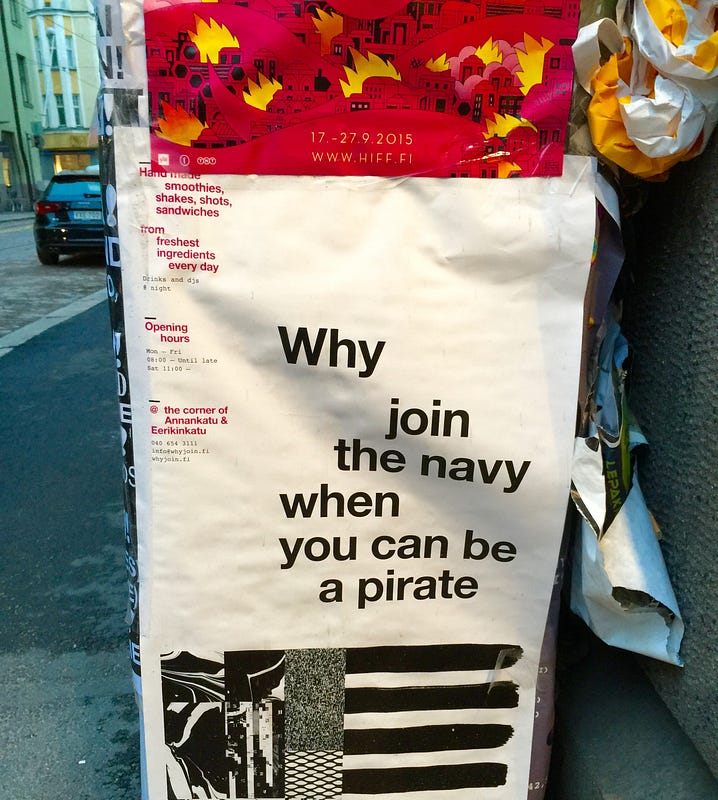Normalmente aqui no blogue, chamo a atenção para a cegueira das empresas de consultoria grandes, parece que escondem dos seus clientes grandes o impacte de Mongo na sua actividade.
Julgo que é a primeira vez que encontro um texto de uma consultora grande sobre Mongo e as suas implicações na economia, nos ecossistemas e na dimensão das empresas.
"In the next manufacturing revolution, spurred on by technologies that reinvent the way a factory can create products, such as 3D printing and robotics, companies will also need to rethink what they make and where they make it. Products will come off the assembly line in small, highly customized batches, like a high-tech version of old-fashioned craftsmanship. [Moi ici: Digam lá se isto não é uma entrada à matador com Mongo em toda a linha!!! Desde os pequenos lotes até aos artesãos tecnológicos longe das máquinas-monumento tão queridas dos que pensam que o Normalistão do século XX automatizado será o paradigma produtivo do século XXI]
.
The revolution is on its way, and within the next five to 10 years, manufacturers in all industries will find themselves in a race to efficiently produce products at the point of demand — that is, where their customers are — and to deliver these items when their customers want them, personalized to their customers’ individual tastes. They will have to make strategic choices to stay competitive, investing in technology that allows them to continually analyze data about their customers’ preferences and buying habits so they can adapt quickly to changes in market conditions. Factories will be smaller, [Moi ici: Imaginem os cromos da Junqueira ao ler estas blasfémias!] operating with minimal lead times and shorter value chains. Management will be decentralized, the supply chain will be simplified and shortened, and the distance separating the manufacturer from its customers will be sharply reduced.
.
Although technology will enable this new manufacturing model, customers will compel its adoption. In emerging markets as well as developed regions, customers increasingly expect products that match local cultural preference rather than homogeneous global brands and business-to-business services. The auto industry pioneered this localized model as long ago as the 1980s, when Japanese automakers entered the U.S. market with cars tailored to American tastes. But only recently have other industries taken up this approach — with refrigerators, toothpaste, furniture, clothing, and software that are designed for each region. The popularity of e-commerce has changed the customer experience, giving people more information about products and competitors’ products, pricing, and, through peer reviews, quality. For the first time, customers can reasonably demand from mass producers products that look and feel like they were made next door.
.
Nimble manufacturers will reap significant gains from the point-ofdemand model. As their supply systems become more responsive and as local customer demand becomes less of a guessing game, inventory inefficiencies and the carrying costs of having to warehouse products in bulk will decline. The expense of supply chain management and production planning will drop as well. And companies able to produce personalized products that are best suited to customer needs when customers want them will enjoy higher sales margins. By contrast, as point-of-demand manufacturing takes hold, companies that operate global factory networks with large centralized plants, managed by traditional operating systems, organizations, and processes, may find that their business models are outmoded."
Ao chegar aqui recordei, "
Pedro Nuno Santos quer Estado como motor do desenvolvimento", porque estava a nascer em mim um outro pensamento, o oposto... o que esperar de um contrarian-militante! O que seria a orientação geral de um governo para facilitar a transição para este tipo de sociedade?
Empresas pequenas, DIY, empreendedorismo verdadeiro não treta para sacar Portugal 2020, fiscalidade normanda, legislação laboral, democratização da produção.
Esta transição vai acontecer, inevitavelmente, pedida, ordenada pelos clientes, pelas tribos de Mongo. E teremos governos cada vez mais incapazes de
perceber o que se passa, questionando-se, "O que passa-se?", cada vez mais crentes nas virtudes do Normalistão, num mundo que se afasta cada vez mais desse paradigma.
Trechos retirados de "
Manufacturing’s new world order: The rise of the point-of-demand model"












